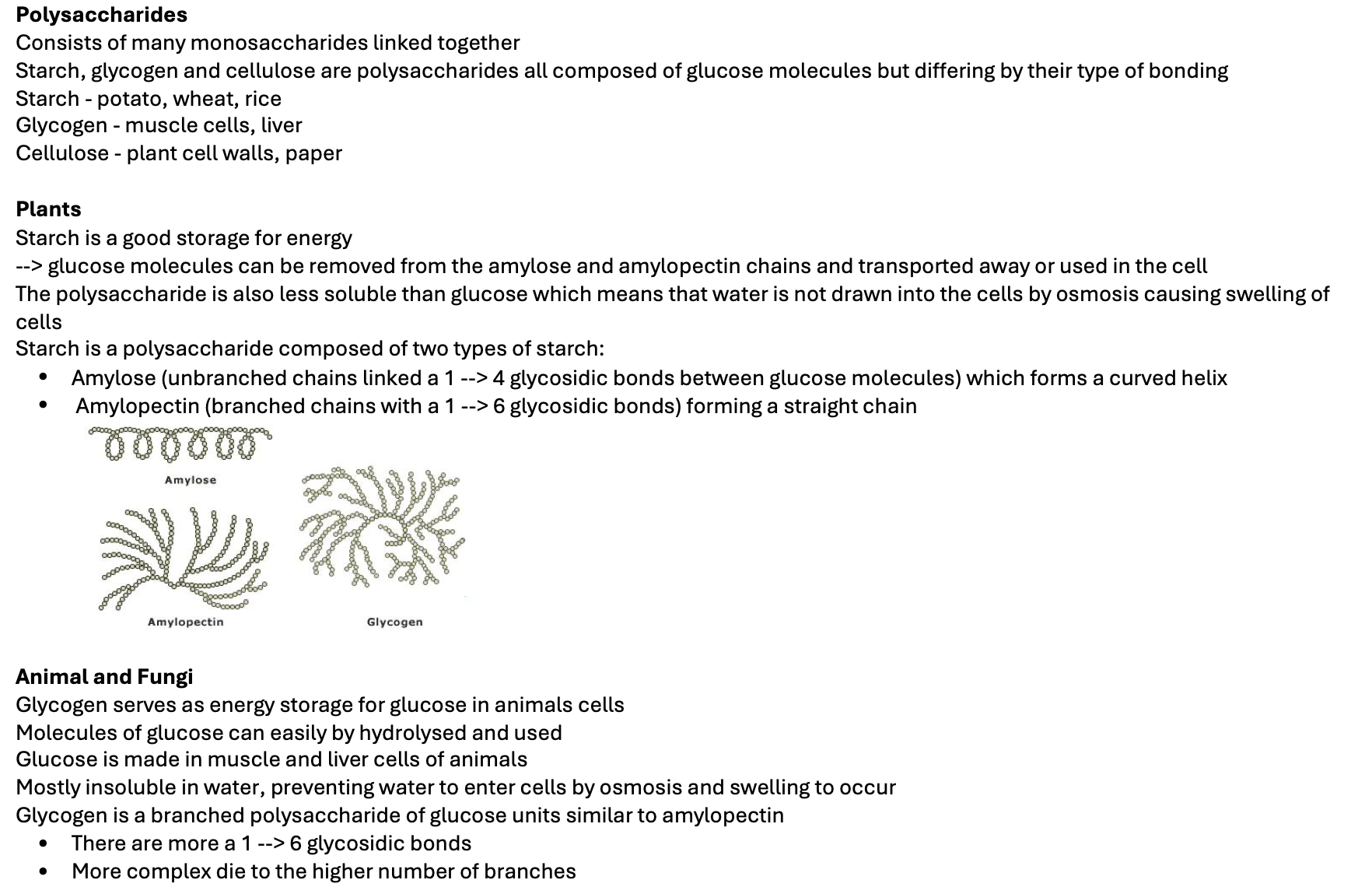Polysaccharides
Polysaccharides
Consists of many monosaccharides linked together
Starch, glycogen and cellulose are polysaccharides all composed of glucose molecules but differing by their type of bonding
Starch - potato, wheat, rice
Glycogen - muscle cells, liver
Cellulose - plant cell walls, paper
Plants
Starch is a good storage for energy
--> glucose molecules can be removed from the amylose and amylopectin chains and transported away or used in the cell
The polysaccharide is also less soluble than glucose which means that water is not drawn into the cells by osmosis causing swelling of cells
Starch is a polysaccharide composed of two types of starch:
Amylose (unbranched chains linked a 1 --> 4 glycosidic bonds between glucose molecules) which forms a curved helix
Amylopectin (branched chains with a 1 --> 6 glycosidic bonds) forming a straight chain
Animal and Fungi
Glycogen serves as energy storage for glucose in animals cells
Molecules of glucose can easily by hydrolysed and used
Glucose is made in muscle and liver cells of animals
Mostly insoluble in water, preventing water to enter cells by osmosis and swelling to occur
Glycogen is a branched polysaccharide of glucose units similar to amylopectin
There are more a 1 --> 6 glycosidic bonds
More complex die to the higher number of branches
